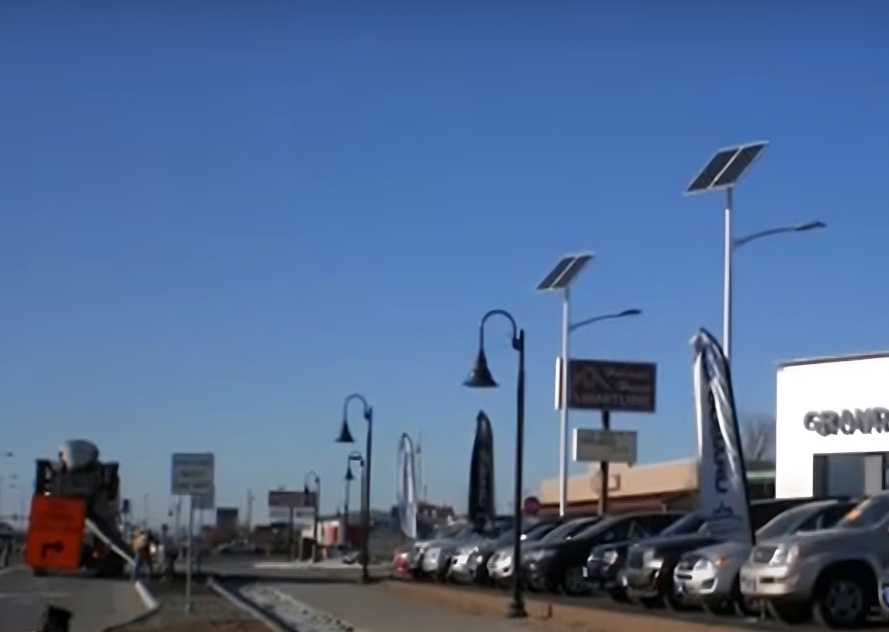The Ultimate Guide to Selecting Poles for Your LED Solar LightsPosted by Stephen Shickadance in Most Popular. Industry News. The Basics.In the quest to create the perfect outdoor ambiance and enhance security around your home, LED solar lights stand out for their efficiency and sustainability. However, the performance and durability of these lighting solutions significantly depend on an often-overlooked component: the pole. Selecting the right pole for your LED solar lights is crucial not only for aesthetic harmony but also for maximizing light coverage and ensuring long-term reliability. This guide will walk you through the key factors to consider when choosing poles for your LED solar lights, ensuring you make an informed decision that complements your outdoor space and meets your lighting needs.
What is the size of the solar light pole?The size of a solar light pole can vary significantly based on its application, design, and the specific requirements of the area it's intended to illuminate. When discussing the "size" of a solar light pole, we typically refer to its height and diameter, which are crucial for ensuring adequate illumination and stability. HeightSolar light poles for residential and garden use often range from about 3 to 8 feet (approximately 0.9 to 2.4 meters) in height. This size is suitable for pathway lighting, accent lighting, or small area illumination. For commercial applications, such as street lighting, parking lots, or large public areas, poles can be much taller, generally between 10 to 30 feet (approximately 3 to 9 meters). In specific cases, such as for lighting over highways or large sports fields, poles might even exceed 30 feet to adequately cover the required area. DiameterThe diameter of the pole is another important dimension, especially for ensuring structural integrity and stability. The diameter can vary from 2 to 6 inches (approximately 5 to 15 cm) for residential and light commercial applications. For larger, heavier-duty poles used in commercial and industrial settings, the diameter can be significantly larger, sometimes up to 8 inches (approximately 20 cm) or more, depending on the height of the pole and the load it needs to support (such as the weight of the solar panel, light fixture, and batteries). Other Considerations
How tall of a light pole do I need?The height of a light pole you need depends on several factors, including the type of area you're lighting, the intensity and spread of the light you require, and aesthetic considerations. Here are some general guidelines to help you determine the appropriate height for different applications: Residential Pathways and Gardens: For home gardens, pathways, or driveway lighting, poles are typically in the range of 3 to 7 feet (about 0.9 to 2.1 meters). This height is sufficient to cast light downwards onto the path or garden without causing excessive glare. Street Lighting and Parking Lots: For illuminating streets, parking lots, or other wide areas where safety and visibility are paramount, pole heights are generally between 12 to 30 feet (about 3.7 to 9.1 meters). The exact height within this range depends on the spacing between poles, the lighting technology used, and the width of the area needing illumination. Commercial Outdoor Areas: For commercial spaces like outdoor seating areas, walkways, or entryways, light poles often range from 10 to 20 feet (about 3 to 6 meters). This height balances the need for sufficient light with creating a welcoming atmosphere. Security Lighting: When the primary goal is security, pole heights might vary widely based on the area's specific needs. For broad coverage, poles may be as tall as 20 to 30 feet (about 6 to 9 meters) to allow for wide-angle illumination. Sports and Recreational Fields: For lighting sports fields or large recreational areas, poles can be very tall—often 40 to 100 feet (about 12 to 30 meters) or more. This height is necessary to cover the large area adequately and minimize shadows and glare. Material Matters: Durability and DesignThe material of your pole can impact everything from its longevity to its aesthetic appeal. Common materials include aluminum, steel, and fiberglass. Aluminum poles are lightweight, rust-resistant, and suitable for most residential applications. Steel poles, on the other hand, offer more strength and durability, making them ideal for areas with harsh weather conditions. Fiberglass poles are known for their corrosion resistance and flexibility, providing an excellent option for coastal regions. Style and Aesthetics: Complementing Your Outdoor DecorYour pole's design should harmonize with the overall aesthetic of your outdoor space. From sleek, modern designs to more traditional or decorative styles, the choice of pole can significantly influence the visual appeal of your garden, patio, or walkway. Manufacturers offer poles in various finishes and designs, allowing you to match or complement your existing outdoor fixtures and decor. Installation and Maintenance: Ease of UseConsider the ease of installation and future maintenance when selecting your pole. Solar light poles with integrated PV panels might require specific orientations to maximize sun exposure, while detachable units offer more flexibility in placement. Additionally, consider the maintenance requirements of the material and the design; some materials may require regular treatments or painting to maintain their appearance and durability. ConclusionChoosing the right pole for your LED solar lights is a critical decision that affects not only the functionality of your outdoor lighting but also its integration into your outdoor space. By considering the material, height, style, and practical aspects of installation and maintenance, you can select a pole that enhances your home's security and aesthetic appeal. Remember, the best pole for your LED solar lights is one that meets your specific needs, blending seamlessly with your outdoor environment while providing reliable, efficient lighting.
Most Popular
Industry News
The Basics
|
ArchivesNo Archives Categories
Want More Info? |
LATEST NEWS & ARTICLES

